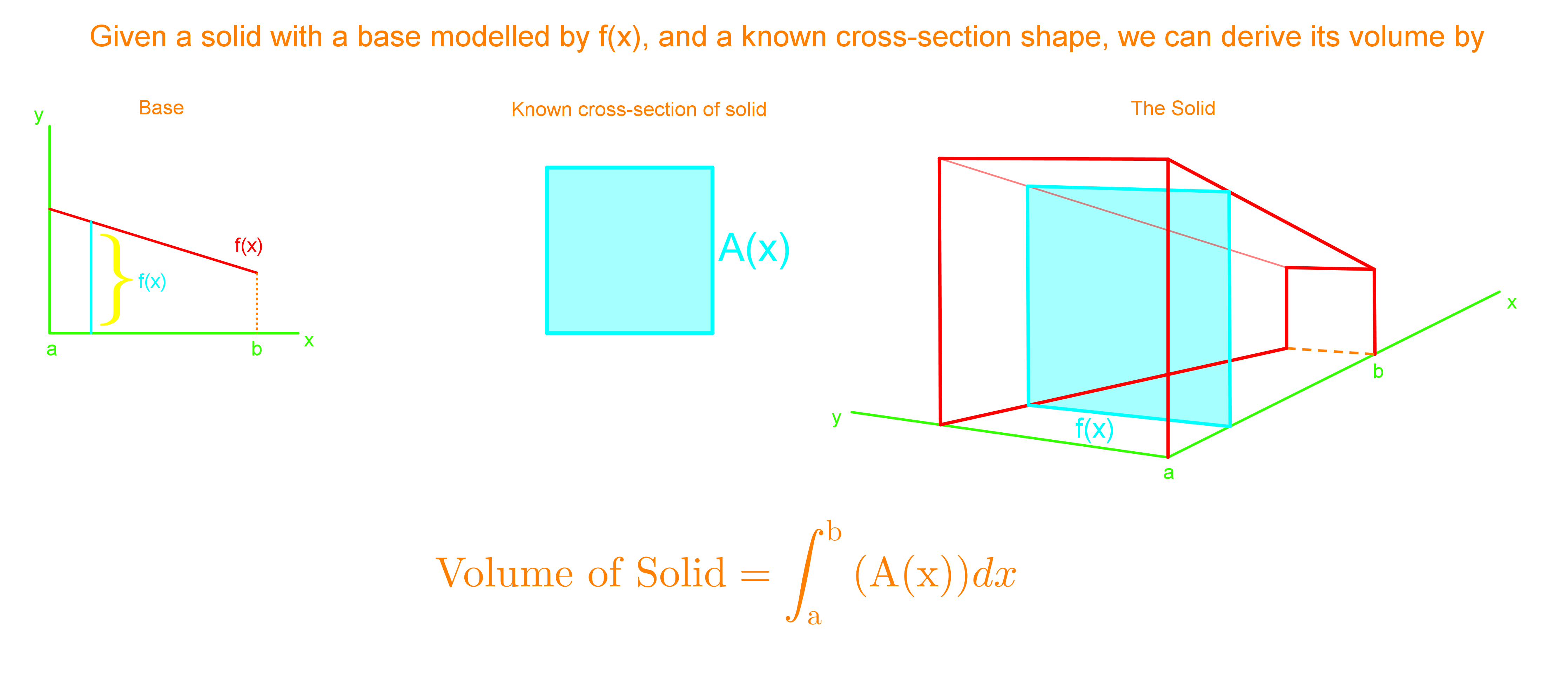






Finding the volume of solids with known cross-sections is a fundamental concept in calculus and geometry. The introduction video provides a crucial foundation for understanding this method, which involves integrating cross-sectional areas to calculate volume. This technique is particularly useful when dealing with complex shapes that may not have simple formulas for volume calculation. By slicing the solid into thin cross-sections and summing up their areas, we can approximate the total volume with increasing accuracy as the slices become thinner. The process relies on the principle of integration, where we accumulate infinitesimally small pieces to obtain the whole. This method is applicable to a wide range of solids, from simple cylinders to more intricate shapes like vases or irregular objects. Understanding cross sections of solids and their relationship to volume calculation is essential for students in mathematics, engineering, and physics, as it forms the basis for more advanced concepts in multivariable calculus and solid geometry.
A cross section of a 3D object is the shape that results from intersecting the object with a plane. It reveals the internal structure of the object at that specific point. For example, the cross section of a cylinder cut perpendicular to its axis is a circle, while a diagonal cut might produce an ellipse.
The cross-sectional area of a solid is the area of the surface exposed when the solid is cut by a plane. It's crucial for volume calculations using integration. For instance, in a cone, the cross-sectional area varies depending on where the cut is made, typically forming circles of different sizes.
Cross-sections are described by their shape, size, and how they change along the axis of the solid. For example, a sphere's cross-sections are circles that vary in size, largest at the center and smallest near the poles. When describing, specify the plane of intersection and how the cross-section changes as you move through the solid.
To identify a cross section, visualize slicing the object with a plane and observe the resulting shape. Consider the object's geometry and the angle of the cut. For complex shapes, it may help to use physical models or 3D visualization software. Practice with simple objects like cubes or cylinders before moving to more complex shapes.
Cross-sections are integral to calculating volumes of irregular solids. By integrating the cross-sectional area function A(x) over the length of the solid, we can determine its volume. The formula V = (a to b) A(x) dx sums up all infinitesimal cross-sectional areas to give the total volume. This method is particularly useful for solids where traditional volume formulas don't apply.
Understanding the volumes of solids with known cross-sections is a crucial concept in advanced mathematics, particularly in calculus and geometry. To fully grasp this topic, it's essential to have a strong foundation in several prerequisite areas. These foundational concepts not only provide the necessary tools to tackle volume calculations but also enhance your overall mathematical reasoning skills.
One of the most critical prerequisites is the definite integral. This concept is fundamental to calculating volumes of solids, as it allows us to sum up infinitesimal slices of the solid to determine its total volume. The definite integral formula provides a powerful method for computing these volumes, especially when dealing with irregular shapes or solids with varying cross-sections.
Another important prerequisite is an introduction to surface area of 3-dimensional shapes. This topic lays the groundwork for understanding how three-dimensional objects are analyzed and measured. By familiarizing yourself with various 3D shapes and their properties, you'll be better equipped to visualize and comprehend the solids whose volumes you'll be calculating.
Building upon this introduction, a deeper understanding of the surface area of 3-dimensional shapes is crucial. This knowledge helps you recognize how the cross-sections of a solid relate to its overall structure and volume. It also provides insights into how changes in a solid's dimensions affect its volume, which is essential when working with known cross-sections.
The relationship between these prerequisites and the main topic of volumes of solids with known cross-sections is intricate and multifaceted. The definite integral serves as the mathematical tool for summing up the areas of cross-sections to determine volume. Meanwhile, the understanding of 3D shapes and their surface areas provides the spatial reasoning necessary to interpret and apply the cross-sectional information effectively.
By mastering these prerequisite topics, you'll develop a robust framework for tackling volume calculations. You'll be able to visualize how a solid is constructed from its cross-sections, understand how to set up the appropriate integrals, and interpret the results in a meaningful way. This comprehensive approach not only aids in solving specific problems but also enhances your overall mathematical intuition and problem-solving skills.
In conclusion, the journey to understanding volumes of solids with known cross-sections is built upon these fundamental concepts. By investing time in thoroughly grasping these prerequisites, you'll find yourself well-prepared to explore more complex volumetric calculations and applications in various fields, from engineering to physics and beyond.
